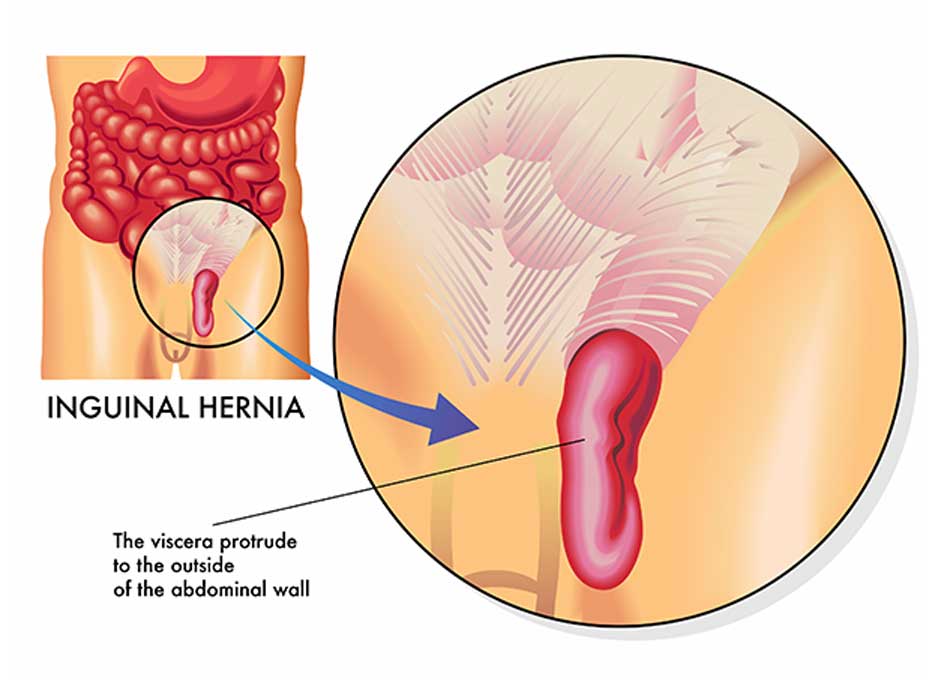
Inguinal hernias form when a portion of the small intestine or abdominal fat bulges through the lower abdominal muscles and into the groin.
Hernias can occur at various places within the body, with the most common locations including the belly button, the diaphragm, the groin, and past surgical incision sites. If a muscle in one of these areas becomes weakened or torn, the tissue, fat, and even organs underneath can protrude through the opening, also known as a hernia.
Inguinal hernias may form on one or both sides of the body.
Types of Inguinal Hernias
There are two types of inguinal hernias: indirect and direct. Indirect inguinal hernias are caused by a birth defect in the abdominal wall. Premature infants are at a higher risk for developing an indirect inguinal hernia. Bulges in the groin may appear when the child is crying or coughing. Direct inguinal hernias are related to weakened abdominal muscles. These weak areas develop over time, usually due to chronic heavy lifting and straining. Approximately 25 percent of adult males, usually after age 40, will develop an inguinal hernia. It is very rare for a female to develop an inguinal hernia. Risk factors include:
- Being male, aged 40 and older
- Having a family history of inguinal hernias
- Smoking
- Having a prior abdominal surgery or injury
- Being overweight or obese
- Suffering from a chronic cough or constipation
- Participating in strenuous activities
- Having a previous inguinal hernia


Signs and Symptoms
Some men experience no signs or symptoms of their inguinal hernia. Others are aware they have a hernia, but experience little or no pain or discomfort from it. Conversely, some men suffer with groin pain, especially when lifting, straining, coughing, or bending over. A noticeable bulge may develop in the groin that disappears when lying down. Other symptoms include:
- Weakness, heaviness, or burning near the area of the bulge
- Swelling in the scrotum and testicles
Usually, an inguinal hernia is not serious or life-threatening. With gentle pressure, the herniated portion of the tissue or organ should slide back into its rightful place. However, if the hernia becomes trapped (incarcerated), this may become a medical emergency. If the incarcerated hernia loses its blood supply, the hernia is said to be strangulated, requiring immediate surgery to correct the problem. Symptoms of a strangulated inguinal hernia include nausea, vomiting, fever, a sudden, drastic increase in pain, a color change to the herniated area, or the inability to pass gas or move the bowels.
Diagnosis
Medical practitioners can often diagnose an inguinal hernia by studying a patient’s past medical history, reviewing current symptoms, and conducting a thorough physical examination. Often, a male may be asked to stand and cough or strain, with the examiner searching for bulges in the groin. Diagnostic imaging is usually not needed unless the physical examination is limited or if there is a suspicion for incarceration or strangulation of the hernia. In this case, abdominal X-rays or CT scans may be necessary.
Treatment Options
If the hernia is small, easily be pushed back into place, and not causing much discomfort, careful monitoring may be all that is needed. However, due to the risk of strangulation, most inguinal hernias are surgically repaired. Surgical options include an open hernia repair (herniorrhaphy), laparoscopic hernia repair, or robotic hernia repair.
